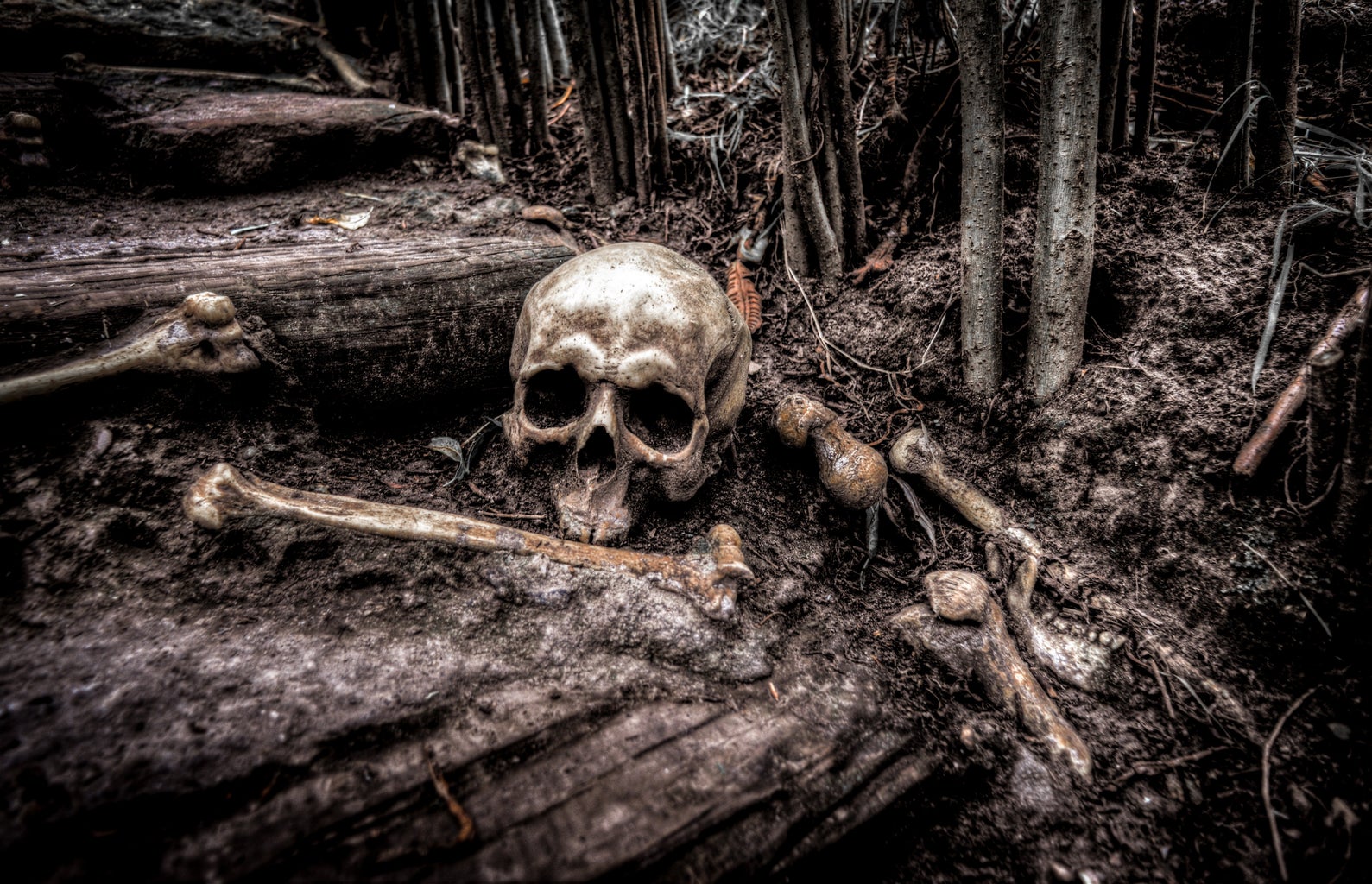Content Warning: This article contains brief mentions of suicide.
It was a dreary night of 1818 that we beheld the accomplishment of Mary Shelley’s toils: Frankenstein, or The Modern Prometheus. Ever since the publication of her famed horror novel, Shelley has inspired conversation after conversation and film after film, chilling our spines and curdling our blood even from the grave.
With Halloween just around the corner, it’s only fitting to tread through spooky season with a tribute to this icon of Gothic literature. Here are nine eerie facts you need to know about the “mother of science fiction” and her treasured masterpiece, Frankenstein.
1. First, let’s clear up some misconceptions.
Victor Frankenstein is the man, not the monster. In many films, the scientist is referred to as Dr. Frankenstein, but in the book, Victor is just Victor: an emo college kid obsessed with the boundaries of life and death.
2. Shelley—then Mary Godwin—comes from a family of really intellectual people.
Her mother was Mary Wollstonecraft, an icon of the women’s rights movement and a pioneer of first-wave feminism. She is the renowned author of A Vindication of the Rights of Woman (1792), in which she argued in favor of educational equality for women. Tragically, Wollstonecraft passed away just weeks after her daughter was born.
Her father, on the other hand, was William Godwin, a controversial philosopher famed for his radically bold promotion of anarchism.
Shelley, too, acquired the label of “radical.” According to Bustle, “[h]er writings, including Frankenstein, have been analyzed for their feminist and communist themes, as well as anti-Catholic symbolism and resistance against individualistic societies.”
3. She had quite the eventful teenage years.
At just 16 years old, Mary Godwin ran away with 21-year-old Percy Bysshe Shelley, the poet who would soon become her husband. Within the next two years, she gave birth to two children, and at age 18, she wrote the first draft of Frankenstein—which is hailed as the first work of science fiction.
Yeah. A teenager invented sci-fi, forever changing the world of entertainment.
4. At first, she didn’t get the credit she deserved for Frankenstein’s publication.
Three years after it was drafted, the book was published anonymously—likely because of Shelley’s status as a woman in the field of writing. Since her husband, Percy Shelley, wrote the introduction, numerous readers theorized that it was actually his work of writing. Mary Shelley was attributed as the author when the book was republished in 1823, and again in 1831. Despite finally attaching her name to her work, she never received any royalties from Frankenstein’s publication.
5. She may have had a kink for graves… or, specifically, her mom’s grave.
To say the least, Shelley spent a lot of time at her mother’s grave. In fact, according to a report by the Portalist, it’s rumored that she learned the alphabet by tracing the letters on her mom’s headstone.
Here’s where things get interesting. Her mom’s grave became a regular meeting place for her and Percy, and it was there that she eventually confessed her love to him. And—though we don’t know for sure—it’s possible that her mom’s grave was the site of a little more than just romantic confessions.
“That’s where we think she had sex for the first time, on her mother’s grave,” said Charlotte Gordon, the author of Romantic Outlaws: The Extraordinary Lives of Mary Wollstonecraft and Her Daughter Mary Shelley, in an interview with the Wall Street Journal. “We can’t prove that they actually had sex, but they certainly declared their love and became intimate.”
6. Her elopement with Percy was a scandal—and prompted more.
After Mary and Percy ran away together, her father, William Godwin, disowned her. Their marriage was a scandal in every possible way: Percy had been her father’s apprentice, and the couple had eloped while Percy was still married to his first wife, Harriet Westbrook. Soon after the Shelley marriage, Westbrook committed suicide.
Some theorists, however, speculate that Westbrook was instead murdered by none other than Mary’s father. Her death would have legitimized the Shelley marriage, saved the Godwins from unrelenting critics, and spared Mary’s sisters’ good names in their pursuit of finding husbands.
7. Shelley’s inspiration for Frankenstein was almost as creepy as the book itself.
The first incarnation of Frankenstein came from a ghost story contest hosted by Lord Byron, the renowned English poet. In her updated introduction, Shelley wrote, “I busied myself to think of a story…one which would speak to the mysterious fears of our nature and awaken thrilling horror—one to make the reader dread to look round, to curdle the blood, and quicken the beatings of the heart.” She added, “If I did not accomplish these things, my ghost story would be unworthy of its name.”
Eerily, Victor Frankenstein’s character came to Shelley in a nightmare. According to Book Riot, she was so thrilled by the dream that she expressed, “I have found it! What terrified me will terrify others; and I need only describe the spectre which had haunted my midnight pillow.” Her protagonist may also be inspired by the inhabitant of a medieval castle in Germany, which has the same name as the book. Castle Frankenstein had been occupied by Johann Conrad Dippel, an alchemist who exhumed the remains of humans and animals for his personal experimentation.
It’s even possible that Shelley’s family history influenced Frankenstein’s themes surrounding haunting revivals. According to the Portalist, reanimation was an unexpectedly common subject of Shelley’s time, and most people considered medical resuscitation to be unnatural—including Shelley’s mother, who had attempted suicide by jumping into the Thames River. After she was revived, Wollstonecraft said, “I have only to lament, that, when the bitterness of death was past, I was inhumanly brought back to life and misery.”
8. Shelley’s most prized possession was her dead husband’s heart.
Percy drowned in 1822 at just 29 years old. Though he was cremated, his heart wouldn’t burn because it had calcified. So what’s one to do with a spare heart? In Shelley’s case, it was obvious: wrap it in a silken shroud and carry it with you wherever you go.
After she died of brain cancer in 1853, the heart was found at her writing desk, right next to her final work in progress. It was wrapped in the pages of Percy’s elegy Adonais.
9. Shelley was a versatile writer.
We know her for Frankenstein, but Shelley didn’t just write deeply philosophical horror novels. She also wrote poetry, plays, short stories, travel books, and biographies. Some of her lesser known works include The Last Man, which follows a lone man after the world is decimated by disease; Valperga, a historical novel about the tyrannical militant Castruccio Castracani; and Lodore, a novel that explores patriarchal society, gendered culture, and the education of women.
Entangled with shocking scandals, dark interests and lustful affairs, Mary Shelley’s life was a Gothic narrative of its own. Are you interested in “quickening the beatings of your heart?” If Shelley’s own story wasn’t enough to achieve that, then consider reading the spawn of her thrilling experiences: her own frightening creation, Frankenstein.
If you would like to write for Her Campus Mount Holyoke, or if you have any questions or comments for us, please email hc.mtholyoke@hercampus.com.




